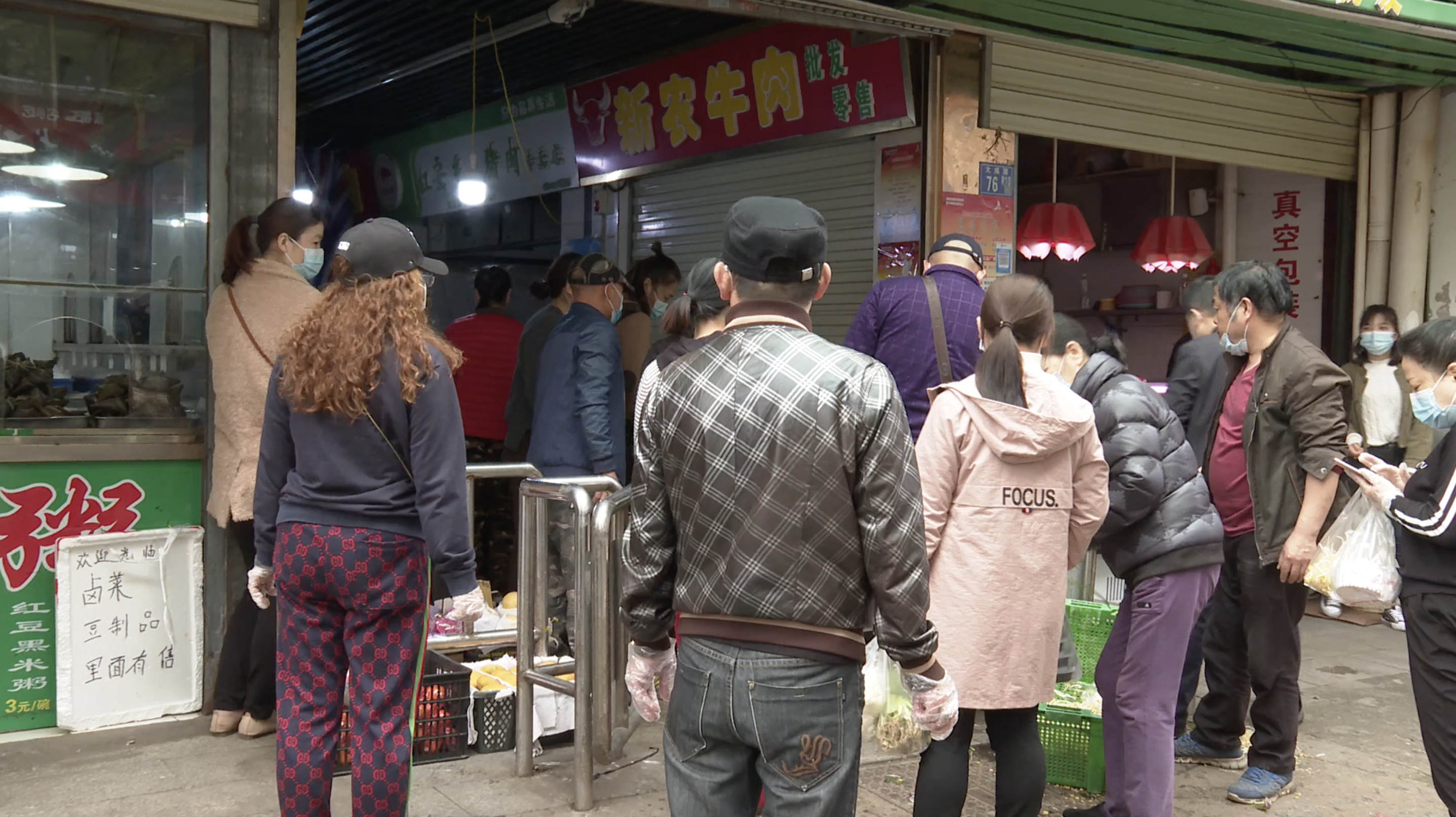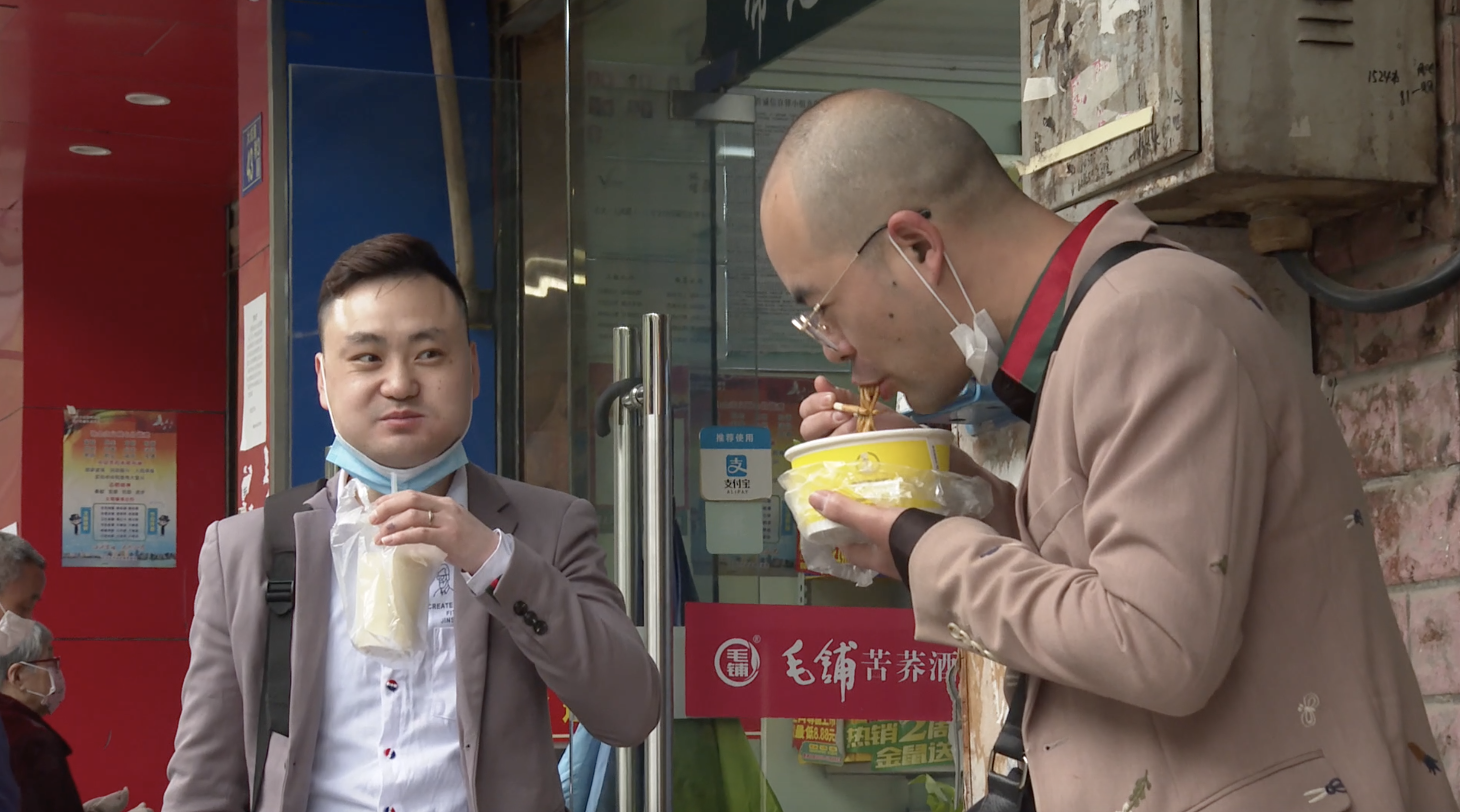02:09

Occupied yellow taxis are once again part of Wuhan's busy rush hour.
To check traffic recovery two weeks after the city ended its lengthy lockdown, I decided to take a taxi and head to Wuhan's oldest Yangtze River Bridge, the most traffic-controlled section of the city.
It was not hard to hail one near our hotel, located in what is considered one of the city's busiest areas. Before the driver started the engine, I had to scan the health code, which is present in public places all over the city.
"Usually, it might be congested at this time?" I asked Zhou Dabing, the driver. "It is almost the same now, but the turnover is limited," he replied.
Zhou resumed his work on April 8, the day Wuhan officially opened up. Working from 6 a.m. to about 4 p.m., he earns over 200 yuan (about 30 U.S. dollars) per day, which is less than half of what he's used to making.
Drivers in the city know where the best pickup spots are. Zhou said he could easily get one customer within 10 minutes before, but now it takes at least an hour.
He attributed the lost revenue to less people on the streets, as many residents have not left their homes. The rate of work resumption directly impacts his income. More people returning to work equals more traffic, which is a good thing for Zhou.
People could say Wuhan, once China's hardest-hit city, is now the safest place in the country, with no new local cases reported for weeks and strict restriction measures in place. However, testing is expanding due to asymptomatic concerns.
I asked Zhou if he had been tested, as local authorities have encouraged everyone returning to work, particularly those in public service, to get tested. "I haven't," he replied. Zhou was not sampled for the epidemiological investigation program either.
I was a bit worried about the situation, even the investigation suggests a slim chance. He added that his family would love to get tested as soon as possible, given the testing capacity in the city reaches over 30,000 per day.

Enjoying local snacks in the morning, in Wuhan, China, April 22, 2020. /CGTN
Enjoying local snacks in the morning, in Wuhan, China, April 22, 2020. /CGTN
Xiang Feng, a police officer at the Yangtze River Bridge, told me there are about 70,000 cars and trucks crossing the bridge, and the city's traffic now is about 80 percent of the previous daytime peak.
But nighttime traffic is much more relaxed due to the closure of some evening businesses, especially in the entertainment sector, such as cinemas, bars and restaurants, Feng added.
Dinner, however, is not a big deal for locals. Breakfast is. It's been said that breakfast is the most important meal of the day and most people in Wuhan emphatically agree. Lining up at reopened food stores goes beyond breakfast.
Feng was happy to do so for his parents when I met him at a time-honored pastry shop on one of the most vital grocery streets.
"Wuhan people like to have their breakfast outside," Feng said. "We had to stay at home before, which was quite depressing."
But now, with the epidemic more under control, all breakfast bars have reopened and everyday life is back to normal, he said. I could tell he was smiling behind his mask.
And unmasking is improperly intriguing.
Residents there signaled their nostalgic appetite for local snacks. For instance, people held a paper bowl of "hot dry noodles," gulping while walking, which is the conventional charm of Wuhan.
"When breakfast comes this way, we feel at ease and it adds more vitality to the city," Feng said.